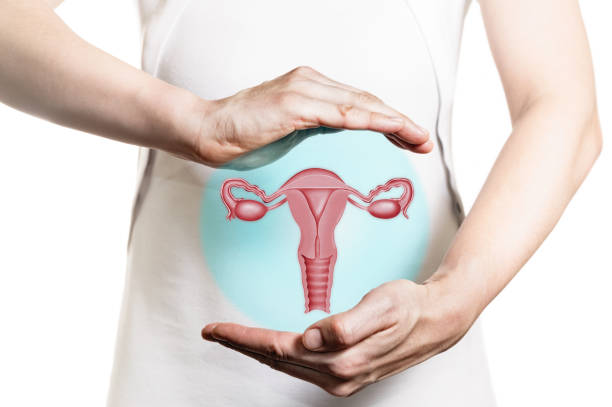Table of Contents
ToggleIf you have been losing your good night’s sleep on searching for these on Google, let’s know the easy and successful to deal with it.
Fallopian tube blockage is most common and frequent among adult females in the age group of 25 to 35 years. The fallopian tube is one vital reproductive organ that, if it gets blocked, can land you in trouble, like fertility issues. Signs of fallopian tube blockage include pain in the pelvis or belly, excruciating pain, discomfort during sexual intercourse, etc.
Fallopian Tube: What Does It Do?
Simply put, the fallopian tube is a connecting bridge that runs between the ovary and the uterus. It has been given the name bilateral tube that performs a two-fold function in a female body-
● Every month during ovulation (roughly in the middle of a menstrual cycle), the fallopian tube’s job is to carry the egg from an ovary to the uterus.
● It carries the egg fertilised by the sperm for implantation in the uterus.
Fallopian Tube Blockage: Main Reasons
What causes fallopian tube blockage in women?
Most women suffer from fallopian tube blockage due to pelvic infections, ruptured appendix, or fallopian tube history of dislocated pregnancy. Most commonly, any injury in the pelvis area because of an accident is what causes the fallopian tube to be blocked in most women. However, there are certainly other factors that also share equal burdens for blocking the fallopian tube.

PROLONGED PELVIC INJURY
It is usually caused by any road accident, car crash, or accidental fall from a height. This injury is internal and, if left untreated for a long time, might damage either or both of your Fallopian tubes. The pelvis houses the fallopian tube; hence, any injury to the pelvis area should not be turned a blind eye upon.
SEXUALLY TRANSMITTED DISEASES
During intercourse, gonorrhoea or chlamydia can cause fallopian tube blockage. You are not likely to know if you have transmitted any diseases that are enough to put your fallopian tube out of place. Here, fallopian tube blockage natural treatment might help you to start.
PELVIC ADHESIONS POST ABDOMINAL SURGERY
The pelvis, which holds the fallopian tubes, often becomes prey to adhesions. This happened mostly during the post-surgery period. Pelvic adhesions are what cause fallopian tube blockage in most cases. The health of the pelvis determines the health of the Fallopian. Endometriosis is a condition that has roots in pelvic adhesions.
FALLOPIAN TUBE AND ECTOPIC PREGNANCY
A fertilised egg mistakenly grows outside of the uterus’s main cavity is called an ectopic pregnancy. One precedes the other. Healthy fallopian tubes precede healthy pregnancy. In most cases, ectopic pregnancies happen in the fallopian tube while it carries the fertilised baby eggs from the ovaries towards the uterus.
Is pregnancy possible with a blocked fallopian tube?
Fallopian tube blockage, in most cases, creates issues in pregnancy. But this is not always the case. Functioning with one fallopian tube makes getting pregnant less likely but not impossible. This is why most gynaecologists recommend IVF (in vitro fertilisation). For more information, you can reach out to Our IVF Specialists at Aastha Fertility Care.
Heard about some ladies with fallopian tubes blocked but got pregnant? Yes, with proper treatment, 6 out of 10 women with blocked fallopian tubes can bring their child to this world.
Sign And Symptoms of Fallopian Tube Blockage
Blocked fallopian tubes a more often than not asymptomatic. Infertility might be the first noticeable symptom of Fallopian tube blockage. Therefore, In modern days, it’s extremely important to check yourself regularly.
Generic Symptoms of a blocked fallopian tube are-
- Abdominal Pain
- Unusual Amount Of Fatigue
- Ectopic Pregnancy (Dislocated Pregnancy)
- A ruptured appendix (rarely)
- Unusual vaginal discharge

Causes of Blocked Fallopian Tube
Multiple reasons can attribute to the blockage or dysfunction of the fallopian tube, including but not limited to:
Pelvic infections
Pelvic Infections that often ignite from bacterial infections effects not only the fallopian tubes but also the surrounding reproductive tissues as well. These bacteria are most likely to get transmitted through unprotected sexual intercourse.
Intrauterine device usage
Intrauterine device usage results in pelvic infections are also possible though it does not happen frequently. These contraceptive devices go inside the uterus and prevent the fertilised ova from implanted.
Endometriosis is another cause of blocked fallopian tubes where the endometrial tissue appears outside the uterus, resulting in pelvic pain during mensuration.
Ruptured appendix
A ruptured appendix is probable yet rare because that might cause certain types of fallopian tube blockage. A ruptured appendix can cause sepsis, a life-threatening condition where the appendix allows bacteria to infect the internal organs, including the fallopian tube.
Pelvic surgery
Pelvic or lower abdomen surgery can also cause one fallopian tube blockage. The record of fallopian tube surgery also brings some risk factors.
Sometimes, abnormalities in the pelvic section can also obstruct the fallopian tubes and interrupt the process of implanting a fertilised egg in the uterus. The reasons include the following:
Uterus and fallopian tubes: Congenital disabilities
Fallopian Tube abnormalities or disorders are of many categories, including:
- Endosalpingiosis
- Sections Fallopian Tube Disorders
- Salpingitis and Pelvic Inflammatory Disease
- Infertility and Tubal Factor
- Isolated Tubal Torsion
- Salpingitis Isthmian Nodes
- Ectopic Pregnancy
- Para tubal Cyst
While some of these abnormalities are noticeable since childhood, the other ones remain suppressed until late adulthood.
Endometriosis, often cured by medication or surgery, occurs when a tissue outlining the uterus grows outside the uterus.
Scar tissue bands forming unconnected structures in the pelvis, uterus fibroid, or polyps
During the uterus surgery, curettage, dilation, scar tissues, intrauterine adhesions, or adhesions dangerously builds up inside the uterus.
Symptoms of Pelvic Infection
- Pelvic pain ruin or rod menstruation time
- General pelvic pain without any apparent reason
- Pain during every sexual intercourse
- Strong and foul-smelling vaginal discharge
- Fever over 101 (rare and acute cases)
- Vomiting (rare and acute cases)
- Lower abdominal pain
Untreated pelvic infection can be life-threatening for females. Understanding the symptoms signs you face any of the facture symptoms like fever and unbearable pain, visit your gynaecologist soon.
FAQs about Blocked Fallopian Tube
1. Can I get my period with a blocked fallopian tube?
The blocked fallopian tube stops the ovum from a mate with sperm. It blocks the pathway of the sperm. But, you can still get your period with a blocked fallopian tube. You might experience a heavier period or sweeping pain during your period with the obstructed fallopian tube.
2. How can a woman know that her fallopian tube is blocked?
Women generally don’t get to know whether they have a blocked fallopian tube until they start preparing for a pregnancy. Hysterosalpingogram (HSG), or laparoscopy are two of the most common diagnoses that your doctor might suggest. The HSG test is done by insisting a liquid dye through the vagina (cervix) by catheter into the uterus. Then, by X-ray, the gynaecologist determines whether there is a blockage or the dye is flowing freely.
3. Is laparoscopic surgery for fallopian tube blockage life-threatening?
Hysteroscope surgery or Laparoscopic surgery is quite a safe and advanced surgical treatment method for blocked fallopian tubes. The surgery is done through minimally invasive procedures. In laparoscopy, a tiny telescope floats through the belly button through a small incision. Patients generally can go back to their normal life after 3-4 days.
4. Can block fallopian tubes be treated without surgery?
Yes, the good news is that blocked fallopian tubes are manageable without surgery. This non-surgical method, “Fallopian tube catheterisation” opens blocked tubes and increases the chance of successful pregnancy. Only a trained interventional radiologist can perform the treatment.
5. How soon after HSG can one try to conceive
You can mostly try petting pregnant AFER a few days after the HSG treatment. But, always remember to consult with your gynaecologist before trying to conceive. If you find any irregularities in the fallopian tubes, consult your interventional radiologist, as these irregularities might restrict you from getting pregnant.
6. Can I do the HSG test twice?
Yes, the HSG test can be down twice. If the first HSG test had shown that the fallopian tubes are blogs or the first test result didn’t come out clearly, the interventional radiologist might prescribe you a second HSG test.





Leave a comment